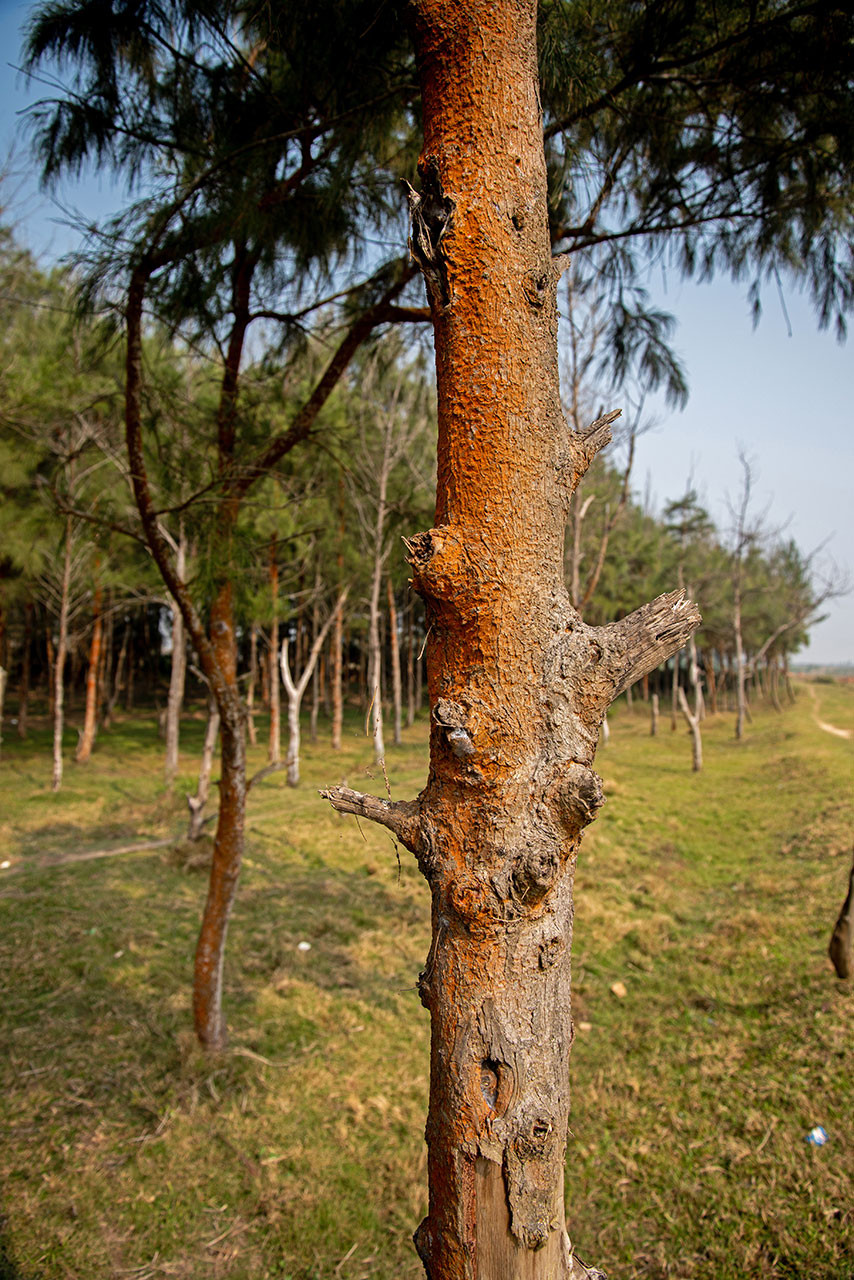Santosh Padhi, 31, lives on the east coast of India, along the Bay of Bengal. He remembers a time in his childhood when a visit to the beach meant a whole day’s trip. Back then, the sea was about two kilometres from his home in Tandahara village, in the state of Odisha. Today, it is a mere 200 metres away.
“The sea has been eating away at the sand and is moving closer everyday,” says Padhi as he walks to the beach. The incoming sea has already submerged the agricultural lands of many families in the village, including Padhi’s.
“In our village, almost 20-30 households have lost their land to the sea. I have documents of my farmland, but it is inside the sea,” Padhi explains, while chuckling at the absurdity of an underwater farm.
India’s eastern coast has been battling erosion due to the increasing extreme climate events. “The eastern coast of India is a traditionally cyclone-prone [region]. [Earlier], every two years, you would have seen one high-intensity cyclone, but now it is witnessing two or more high-intensity cyclones every year,” explains Abhinash Mohanty, a climate researcher at Council of Energy, Environment and Water (CEEW), a Delhi-based climate policy think tank.
In Padhi’s village, many households have left the village and relocated elsewhere. But the ones who have stayed back are trying to fight the incoming sea and the cyclones, with the help of one magical tree, Casuarina (Casuarina equisetifolia).
Native to the coastal regions of Australia and Southeast Asia, Casuarina was introduced in India in the 19th century as fuelwood. However, after the devastating tsunami of 2004 that hit multiple countries in Southeast Asia and South Asia and claimed the lives of 230,000 people, Casuarina trees rose in popularity for their ability to be efficient bio-shields. Fast-growing and easy to maintain, it was believed that Casuarina plantations break tsunami waves, shield communities from saline winds and limit flooding.
In Tandahara, multiple patches of Casuarina plantations grow between the sea and the settlement. “If the forests are not there, we won’t be able to farm; the salty water and salty air enter agricultural lands and the sand also needs to be held down,” explains Padhi.
Far from the Truth
But according to Saudamini Das, an economist who has studied the effectiveness of Casuarina trees as bio-shields against cyclones, the truth is contrary to popular belief. “During cyclones, the Casuarina trees are the first ones to break, because they are very fragile. Once broken, they act like missiles, hitting houses, people and infrastructure during storm surges. You can have more damage in that area compared to the damage you see without these trees,” she explains.
In Tandahara, patches of Casuarinas have undergone multiple levels of damage. Padhi explains that the villagers keep regrowing one patch as cyclones destroy it cyclically: “We have to do it. We have no other choice. Already, a part of my land is under the sea. Soon the rest will follow. Maybe even my house might go into the sea. We only plant Casuarinas because no other tree is resistant to the salty water.”
Because of being salt resistant, Casuarina has become popular and a favoured tree among local communities. But its side effects on the coastal ecology are many, according to Das. “Casuarina is playing havoc on the coastal ecology. Its leaves don’t decay and keep piling up, affecting the percolation of water. Unless taken out manually, the leaves restrict rain water from percolating down to the ground, making the soil alkaline,” explains the expert.
Das dismisses the supposed positive role that Casuarinas play as bio shields. “There are clear-cut findings in my study that [show] Casuarinas are not very suitable candidates for coastal protection,” she says. In her research, Das has found that native trees are better suited for reducing storm flow and controlling erosion.
But in Odisha, almost every coastal village is growing a Casuarina forest. And so is the case in the states of Andhra Pradesh and Tamil Nadu.
Working Hard to Protect No One
In the coastal village of Astaranga in Odisha, local women wake up every day to tend and clean the Casuarina plantation on the beach next to their village. The forest here is much larger and more dense. The Forest Department of Odisha has been involving local communities in maintaining Casuarina plantations, in an attempt to green the coastline.
As many as 116 women from the village work voluntarily for the state forest department, taking care of the plantation. Nabi Behera, 50, is one of them. She has been tending to the plantation for the last four years. “Seeing my work, the forest department asked me to take care of the beach too,” she says. On the beach, hundreds of endangered Olive Ridley Turtles come ashore every year to nest and lay eggs.
Behera, who belongs to a fishing family, cannot make a living from fishing for seven months a year, as fishing in the region is restricted to boost the survival rates of the Olive Ridley Turtle. Behera believes her voluntary work is helping the environment, but research shows otherwise. Researchers suggest that Casuarina plantation drives in areas where it is not native have dramatically changed the habitat and affected sand dune formations.
Odisha’s coastline naturally had no plantations. The sandy beaches were covered with small shrubs and bushes. Some reports suggest that beaches with Casuarina plantations have lower levels of turtle nesting and the trees have been creating a barrier that the turtles cannot cross. They have also become a shield for predators. “Earlier, animal attacks on Olive Ridley Turtles were very less. But now jackals and dogs hide behind the Casuarina and attack the turtles,” explains Das. Recently, Maharashtra banned planting Casuarinas on turtle nesting beaches.
Despite its now apparent side effects, Casuarina continues to grow in popularity on the eastern coast. Beyond being a bio-shield, it has gained popularity as a commercial tree for the paper and timber industry.










